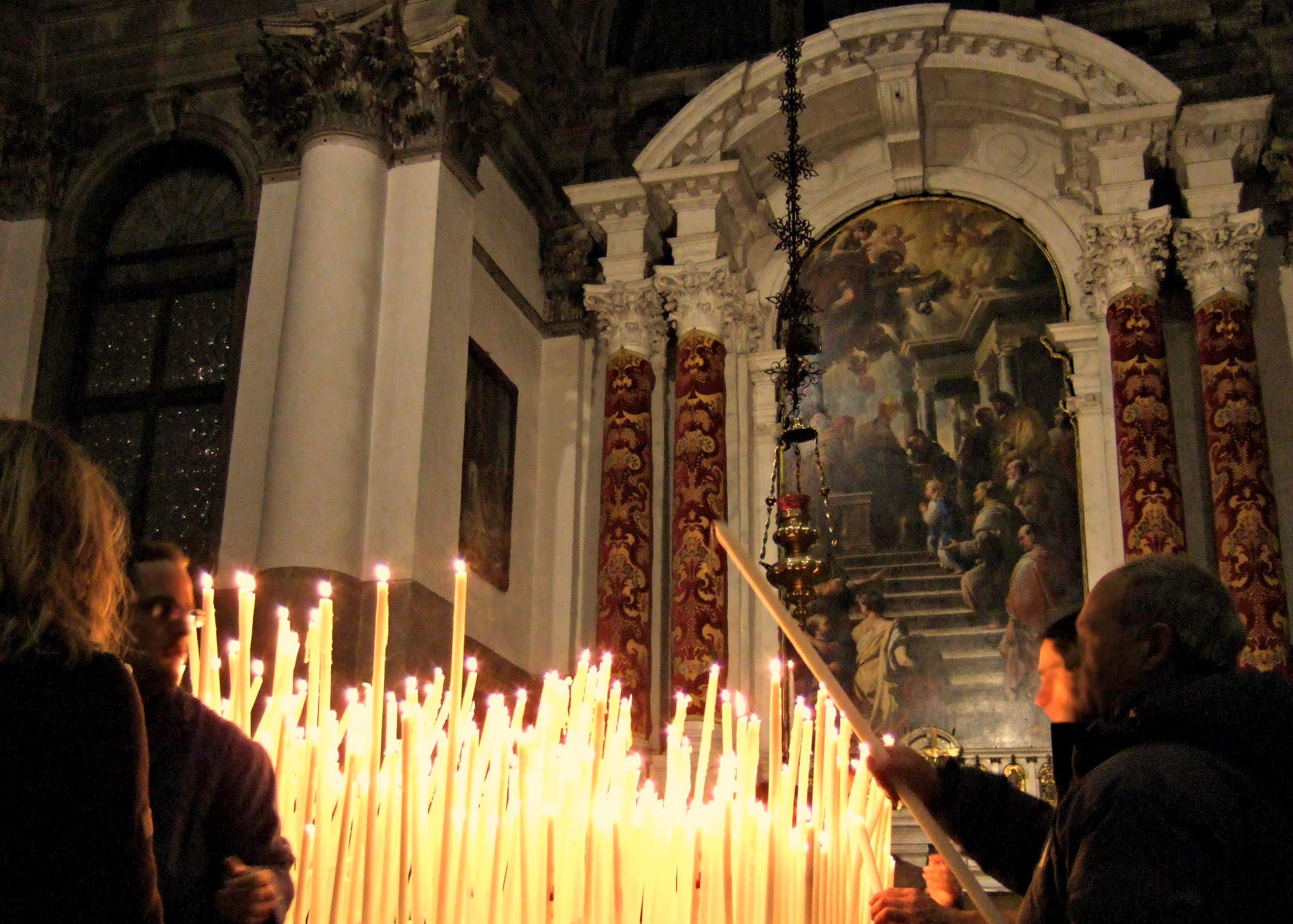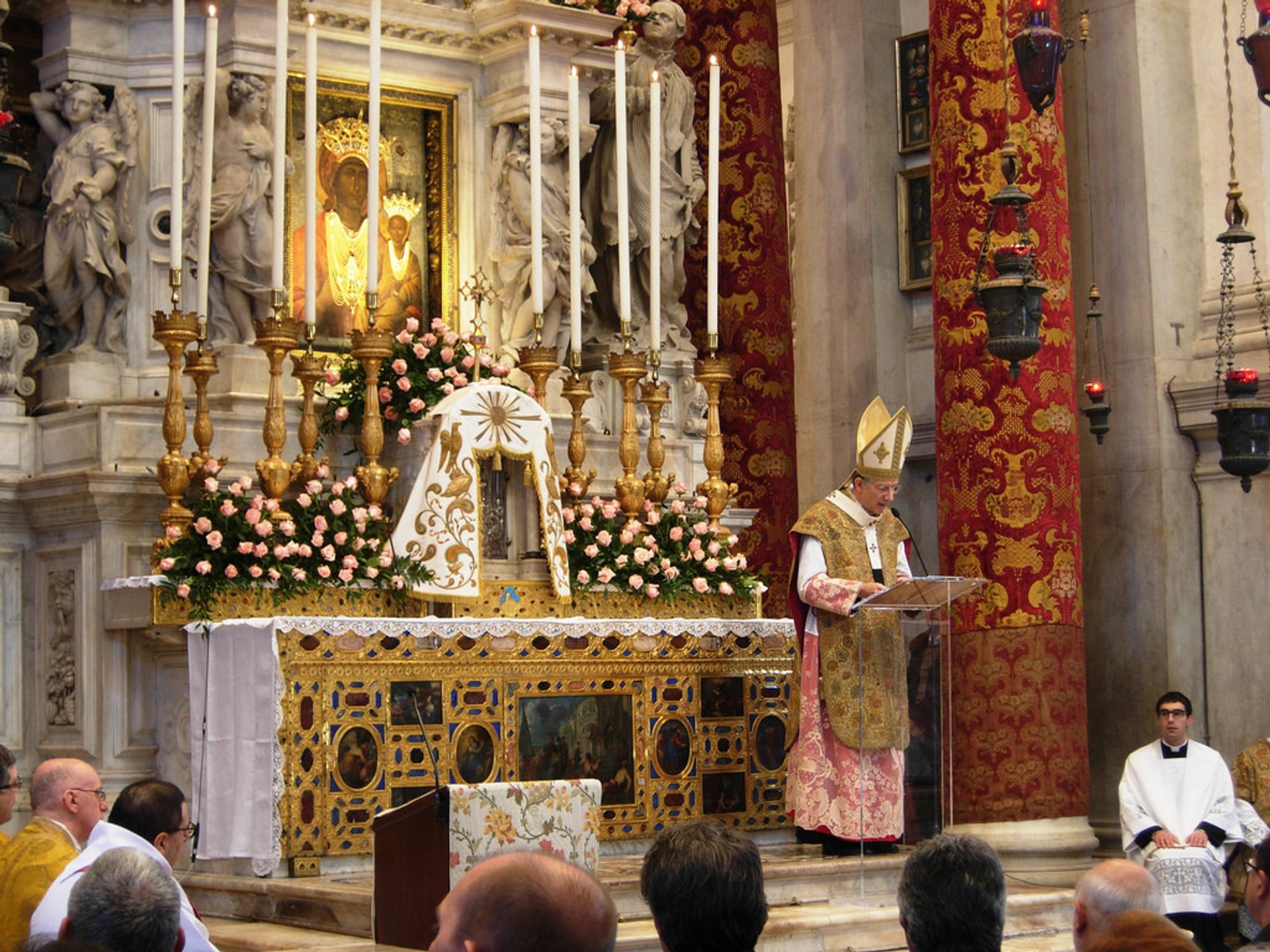Feast of the Madonna della Salute in Venice, history and traditions
It is a long and slow journey that takes place on November 21 every year the Venetians they perform to bring a candle or a candle to the Madonna of Health.
There is no wind, rain or snow to hold, it is a duty to go to Salute to pray and ask Our Lady for protection for oneself and loved ones. A slow and long procession that is done on foot, in the company of family or closest friends, crossing as usual the floating votive bridge, which is positioned every year to connect the district of San Marco to that of Dorsoduro.

THE HISTORY OF OUR LADY OF HEALTH
Just like four centuries ago, when the doge Nicholas Contarini and the patriarch John Tiepolo they organized, for three days and for three nights, a procession of prayer that gathered all the citizens who survived the plague. The Venetians made a solemn vow to Our Lady that they would build a temple in her honor if the city survived the epidemic. The link between Venice and the plague is made up of death and suffering, but also of revenge and the will and strength to fight and start again.
The Serenissima recalls two great plagues, of which the city still bears the marks. Dramatic episodes that caused tens of thousands of deaths in a few months: between 954 and 1793 Venice recorded a total of sixty-nine episodes of plague. Among these, the most important was that of 1630, which then led to the construction of the temple of Health, signed by Baldassare Longhena, and which cost the Republic 450 thousand ducats.
The plague spread like wildfire, first in the San Vio district, then throughout the city, also aided by the recklessness of the merchants who resold the clothing of the dead. The then 150 thousand inhabitants were seized by panic, the hospitals were overcrowded, the corpses of the dead from contagion were abandoned in the corners of the streets.
The patriarch John Tiepolo he ordered that public prayers be held throughout the city from 23 to 30 September 1630, especially in the cathedral of San Pietro di Castello, then the patriarchal seat. The Doge joined these prayers Nicholas Contarini and the whole Senate. On 22 October it was decided that for 15 Saturdays a procession should be held in honor of the Maria Nicopeya. But the plague continued to claim victims. Almost 12 victims were recorded in November alone. Meanwhile, the Madonna continued to pray and the Senate decided that, as happened in 1576 with the vote to the Redeemer, a vow should be made to build a church to be dedicated to the "Holy Virgin, naming it Santa Maria della Salute".
Furthermore, the Senate decided that every year, on the official day of the end of the infection, the doges should solemnly go to visit this church, in memory of their gratitude to the Madonna.
The first gold ducats were allocated and in January 1632 the walls of the old houses began to be dismantled in the area adjacent to Punta della Dogana. The plague finally subsided. With almost 50 victims in Venice alone, the disease had also brought the entire territory of the Serenissima to its knees, recording about 700 deaths in two years. The temple was consecrated on November 9, 1687, half a century after the spread of the disease, and the date of the festival was officially moved to November 21. And the vow made is also remembered at the table.

THE TYPICAL DISH OF THE MADONNA DELLA SALUTE
Only for one week a year, on the occasion of the Madonna della Salute, it is possible to taste the "castradina", a mutton-based dish that was born as a tribute to Dalmatians. Because during the pandemic only Dalmatians continued to supply the city by transporting smoked mutton in trabaccoli.
The shoulder and the thigh of the mutton or lamb were prepared almost like today's hams, salted and massaged with a tanning made from a mix of salt, black pepper, cloves, juniper berries and wild fennel flowers. After preparation, the pieces of meat were dried and lightly smoked and hung outside the fireplaces for at least forty days. There are two hypotheses on the origin of the name "castradina": the first derives from "castra", the barracks and deposits of the fortresses of the Venetians scattered on the islands of their possessions, where the food for the troops and the slave sailors of the galleys were kept ; the second is a diminutive of "castrà", a popular term for mutton or lamb mutton. The cooking of the dish is quite elaborate because it requires a long preparation, which lasts three days like the procession in memory of the end of the plague. The meat is in fact boiled three times in three days, to allow its purification and make it tender; it then proceeds with slow cooking, for hours, and with the addition of cabbage which transforms it into a tasty soup.
Source: Adnkronos.